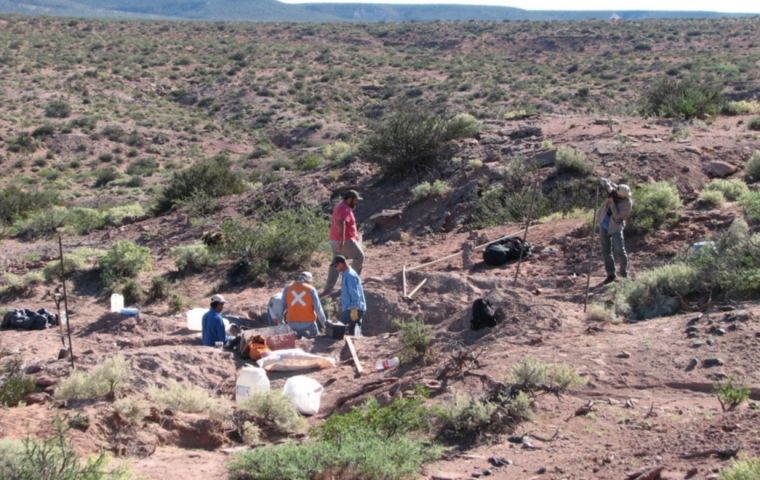MercoPress. South Atlantic News Agency
Remains of new dinosaur species unearthed in Argentine Patagonia
 The new specimen was classified as “abelisaurid.”
The new specimen was classified as “abelisaurid.” Argentine scientists Thursday confirmed fossils of a dinosaur found in the province of Neuquén belonged to the Llukalkan aliocranianus, known as “the one that causes fear.”
The Llukalkan lived about 80 million years ago and was about five meters long, with very sharp teeth, huge claws on its feet, and a keen sense of smell. I was one of the main predators of the region during the Upper Cretaceous.
The skull was found in northern Neuquén, the federal government-run science agency Conicet announced on its website.
According to the Journal of Vertebrate Paleontology, the new specimen was classified as “abelisaurid” due to its short skull with rough bones.
It is estimated that its head had protrusions and prominences similar to those that some reptiles, such as iguanas, have today. It is also speculated that the Llukalkan had better hearing than other “abelisaurids”, similar to that of the current crocodile.
In addition, in the middle ear area, the fossil remains - a very well preserved and uncrushed skull - show a small air-filled posterior sinus that has not been seen in any other abelisaurid found so far.
The Llukalkan lived in the same area and time period as another species of Furileusaurian abelisaur (stiff-backed lizard), the Viavenator exxoni, only a few million years before the end of the age of dinosaurs.
The Llukalkan and Viavenator fossil remains were found just 700 meters away in the Bajo de la Carpa Formation, near the same famous fossil site at La Invernada, in Neuquén province.
Palaeontologist Federico Gianechini, from the National University of San Luis, said it was a “particularly important discovery because it suggests that the diversity and abundance of abelisaurids were remarkable, not only in Patagonia but also in more local areas during the twilight period of the dinosaurs.”
The “abelisaurids” were a family of theropod dinosaurs averaging five to nine meters long that inhabited Patagonia and other areas of the ancient southern subcontinent of Gondwana, recognized today as Africa, India, Antarctica, Australia and South America.
So far, nearly 10 species of this fearsome predator have been unearthed in Patagonia.




Top Comments
Disclaimer & comment rulesCommenting for this story is now closed.
If you have a Facebook account, become a fan and comment on our Facebook Page!